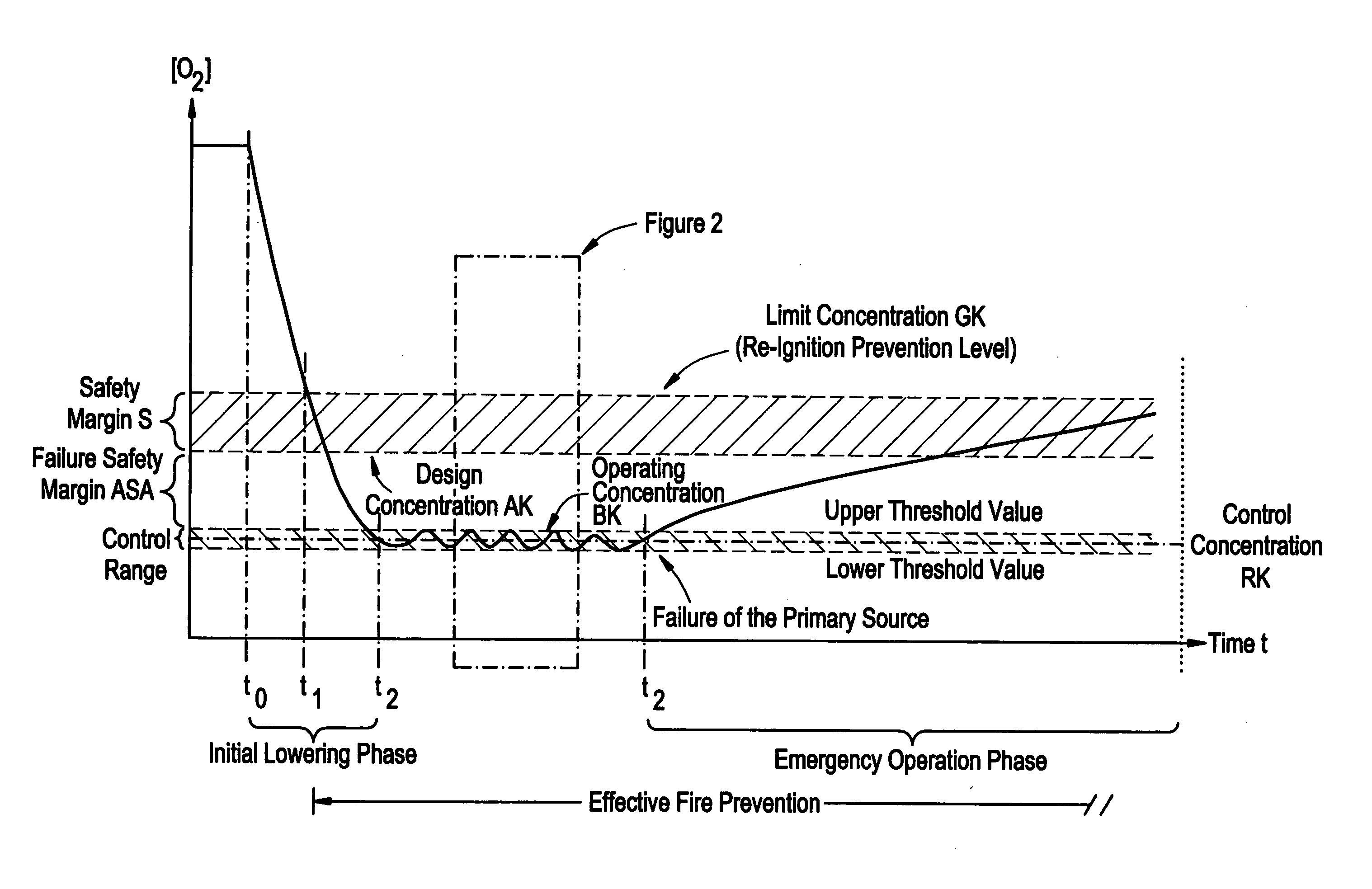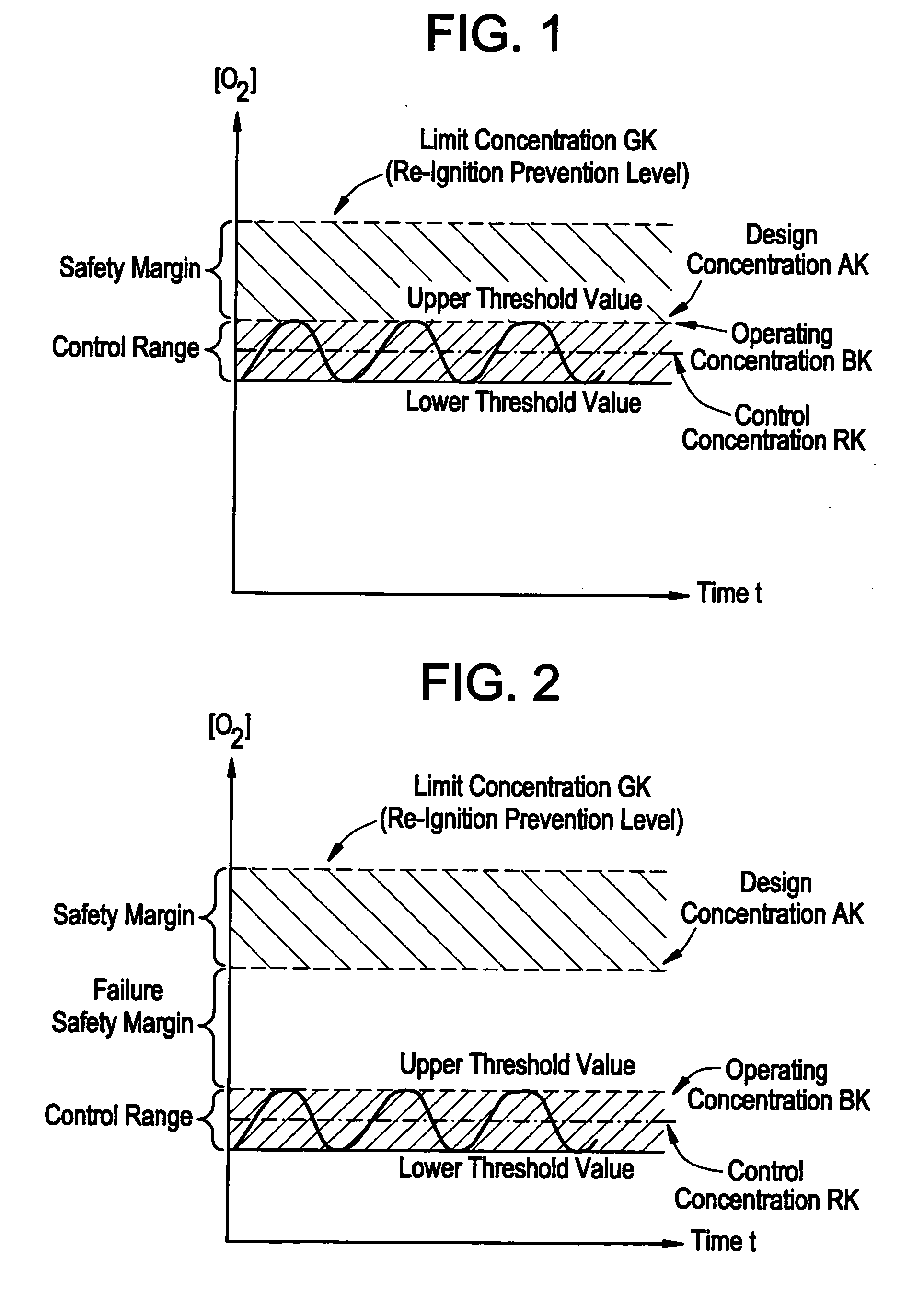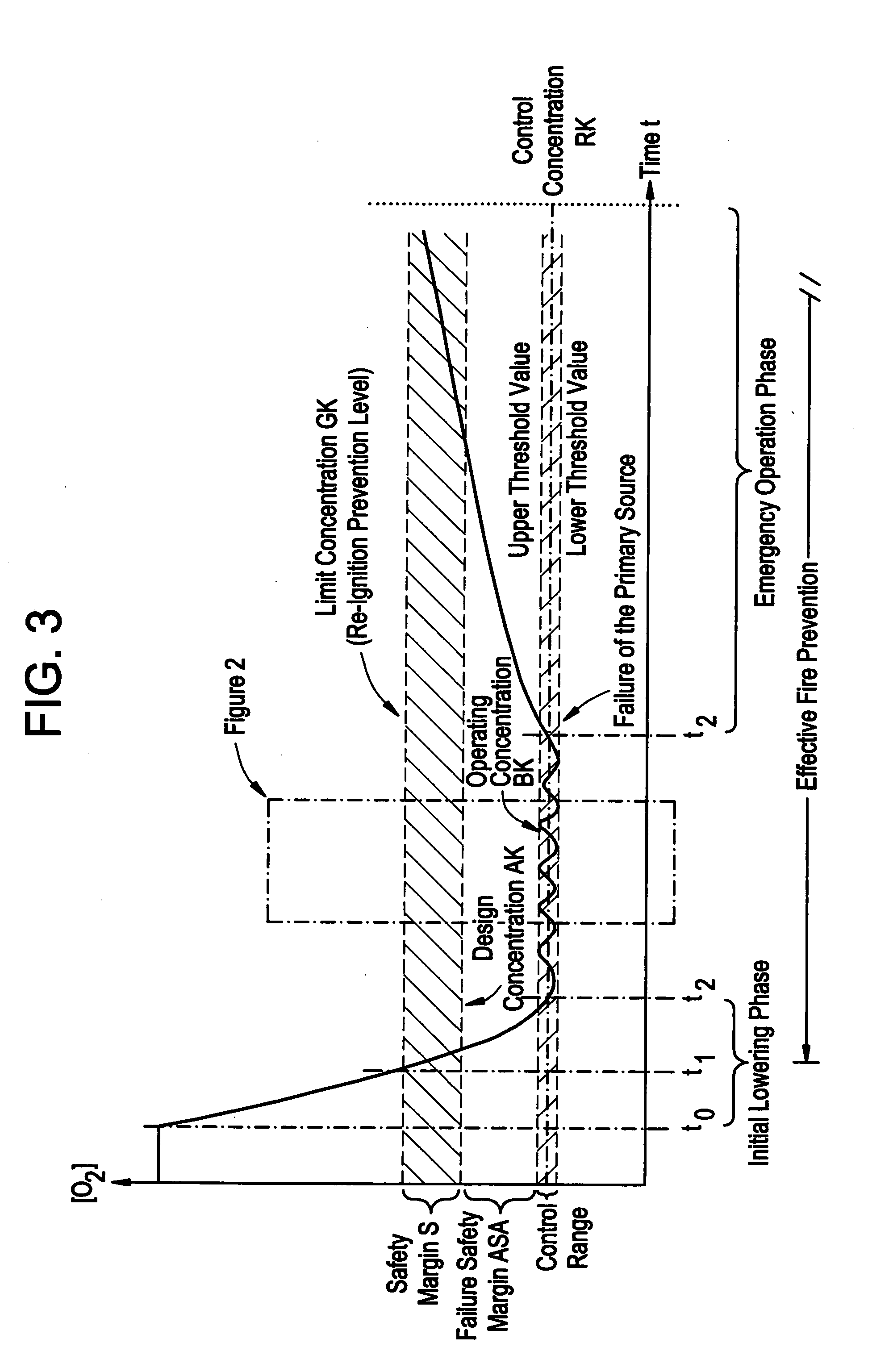Inertization Method For Reducing The Risk Of Fire
a technology which is applied in the field of reducing the risk of fire in an enclosed protected area, can solve the problems of clear limits in terms of fail-safe performance, combustible materials no longer being able to burn, and control concentration having to be maintained for an extended period of time, so as to effectively prevent the ignition or re-ignition of combustible materials
- Summary
- Abstract
- Description
- Claims
- Application Information
AI Technical Summary
Benefits of technology
Problems solved by technology
Method used
Image
Examples
Embodiment Construction
[0037]FIG. 1 shows a section of a course over time of the oxygen concentration in a protected area, with the operating concentration BK and the control concentration RK of the oxygen content according to the first alternative of the inertization method according to the invention being maintained by means of a secondary source. In the illustrated graph, the y-axis represents the oxygen content in the protected area and the x-axis represents time. In the present case, the oxygen content in the protected area has already been lowered to a so-called full inertization level, i.e., to a control concentration RK that is below an operating concentration BK.
[0038]In the scenario illustrated schematically in FIG. 1, the operating concentration BK exactly corresponds to the design concentration AK. The design concentration AK is an oxygen concentration value in the protected area, which is in principle below a limit concentration GK that is specific for the protected area. The limit concentrat...
PUM
 Login to View More
Login to View More Abstract
Description
Claims
Application Information
 Login to View More
Login to View More - R&D
- Intellectual Property
- Life Sciences
- Materials
- Tech Scout
- Unparalleled Data Quality
- Higher Quality Content
- 60% Fewer Hallucinations
Browse by: Latest US Patents, China's latest patents, Technical Efficacy Thesaurus, Application Domain, Technology Topic, Popular Technical Reports.
© 2025 PatSnap. All rights reserved.Legal|Privacy policy|Modern Slavery Act Transparency Statement|Sitemap|About US| Contact US: help@patsnap.com



